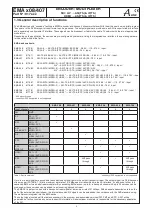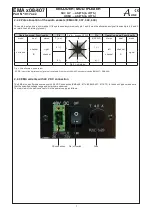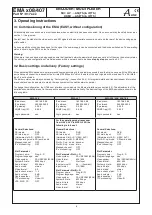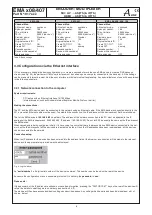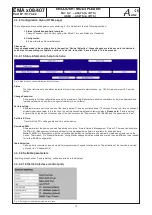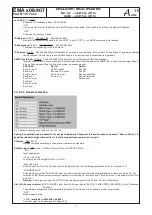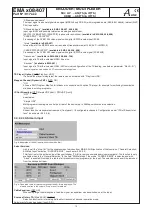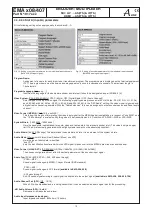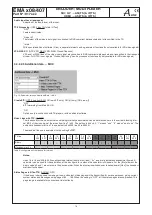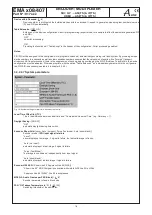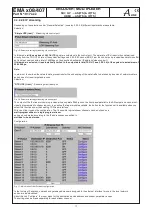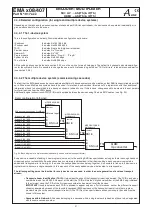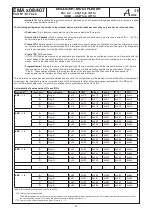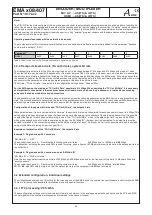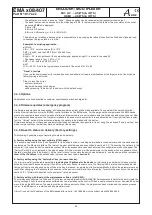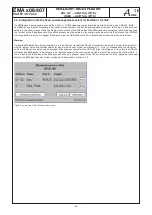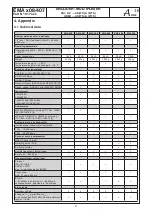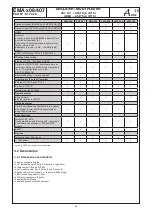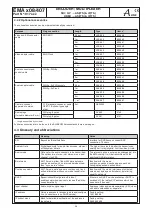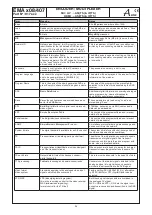
15
EMA x08/407
Part N
o
: 917x.xx
ENCODER/ MULTIPLEXER
SDI/ A/V
→
ASI(TS) & IP(TS)
HDMI
→
ASI(TS) & IP(TS)
A
LINE
3.3.2.2.6 Channel MUX (settings for the transport stream)
Fig. 13: Parameter settings for the transport stream configuration
ASI Output Mode:
[Continuous/ Burst]
“Continuous Mode“
All the bytes in the output stream have a fixed temporal distance from each other. The maximum data rate in this mode is
98 Mbps.
“Burst Mode“
All bytes of a packet are sent without a space, as a burst (27 MHz). The bit rate is enforced by the spacing of the packets
from each other. A maximum of 214 Mbps is possible here.
„Loop IN
→
OUT“:
The input signal is connected directly to the output.
Note:
When the IP output is activated, only continuous mode up to 98 Mbps is possible.
Bytes per Packet:
[188/ 204]
For the TS-Out 188 or 204 bytes per packet can be selected (mode „Loop IN
→
OUT“ always 188).
TS OUT Bitrate:
[1000..38000..214000]
The output bit rate can amount to 1,000 .. 214,000 kbps.
Note:
If the IP streaming mode
“Simple UDP (rear) - Streaming via Control“
is selected (“General Selection“, see 3.3.2.2.2
and 3.3.2.2.6), the TS-OUT bit rate is limited to 20,000 kbps in order not to overload the control interface.
TS-ID:
[1..65535]
(Transport stream Identifier) Factory setting = device number. This is the ID of the generated transport stream in the transpon-
der. All devices of a cascade must use the same TS ID (see 3.3.4.2).
Provider Name:
[Provider]
For the formed transport stream, the “Program Provider“ can assign a name. The name for any particular TS ID should be the
same in all devices in a cascaded system. The length of the name is limited to 16 characters.
Create NIT:
[OFF, dummy, Cable, Satellite, Terrestrial]
“OFF“
No NIT (network information table) is generated.
“dummy“
The multiplexer creates an empty NIT as place-holder (extendable with table script)
“Cable“, “Satellite“, “Terrestrial“
The NIT is produced with the appropriate specification but without any details of frequency.
Create TDT/ TOT:
[OFF, ON]
With the help of the internal RTC (Real Time Clock) and the ”Local Time Offset“ the tables for time are generated here.
Network ID:
[1..100..65535]
Unique identifier for the network, for instance, number of the cable network. The network ID of all transport streams generated
in a network should be the same.
Original Network ID:
[1..65535]
Information to identify the origin.
Cascade Number within Network:
[1..64]
Cascade number: to distinguish equipment installed cascade within a transmission network. It must be the same number
for all devices of a cascade and it serves to generate unique program numbers (designated by service ID), see also chapter
3.3.4.2.




